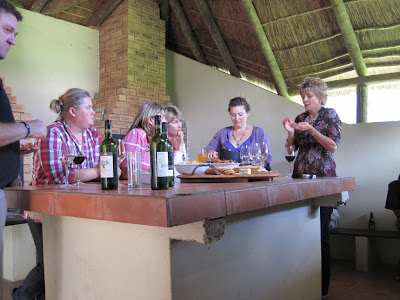This brings us to the end of 2010. The year 2010 will be remembered for a lot of great and not so great events. We kicked off with the terrible earthquake that hit Haiti. Wikileaks causing world wide controversy. The Chilean Mine disaster and the miraculous survival story. The Pakistan floods that displaced about 20 million Pakistanis and cost the economy $43 billion.The disastrous oil spill in the Gulf of Mexico. But 2010 will most certainly be remembered for the fantastic Soccer World Cup, hosted by South Africa and won by Spain. This event opened the eyes of the world, so that they could see what South Africa is really about. Passion. Hospitality. Untamable spirit and a breathtaking nature and natural wonders.
But that is the world. This site's world revolves around Darling Cellars, its producers, the grapes and the wine. So what did 2010 mean to me with regards to the above?
One thing that comes to mind is the Downy Mildew knock we took. 17% of our crop was decimated by this fungus. Probably the disease with the biggest economical impact on the wine industry. This wasn't all bad though. It caused for a smaller, more intense crop. The result was very good grape juice, and great wines.
This year we had the craziest weather patterns. I still don't know what season it is! I don't know if it is global warming or just a break in the weather pattern, but it surely makes farming very difficult.
That is not the only highlights or low points, there are many more, but I am starting to bore myself with all this typing. Lets get to the pictures! I took some this morning. Veraison started on the Pinotage blocks already. To think, in 30 days we are harvesting again. Wow. It just sunk in.
Pinotage



Shiraz



Nouvelle


Sauvignon blanc


Thanks to everyone that followed this blog in 2010. Please mail me suggestions if you'd like to see specific things featured on here. Please register to the mailing list on the top right corner of the page. The blog updates goes directly to your mail box and saves you bandwidth.
Merry Christmas from all of us at Darling Cellars and enjoy the short break. Till next year.
Jaco











































